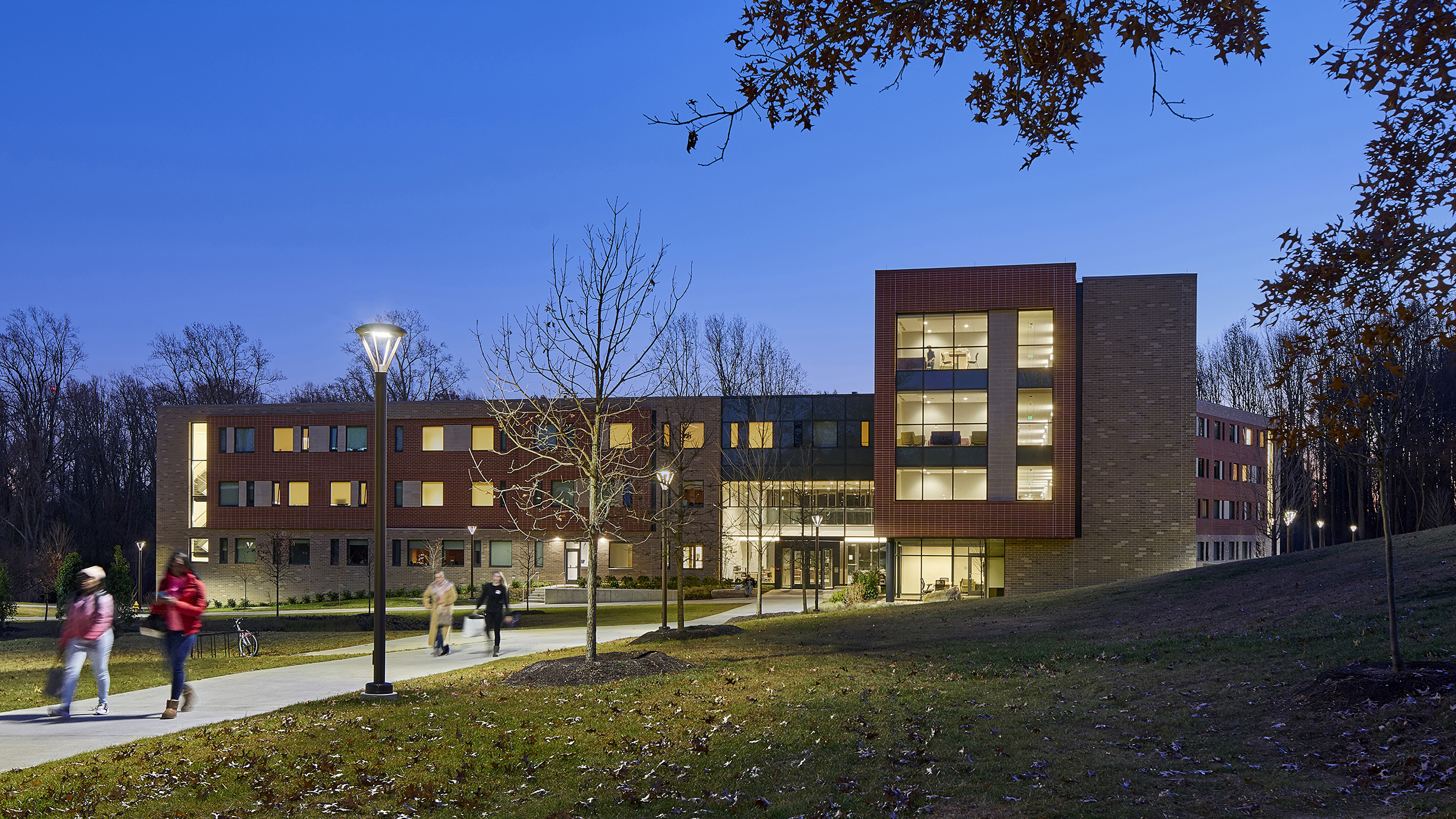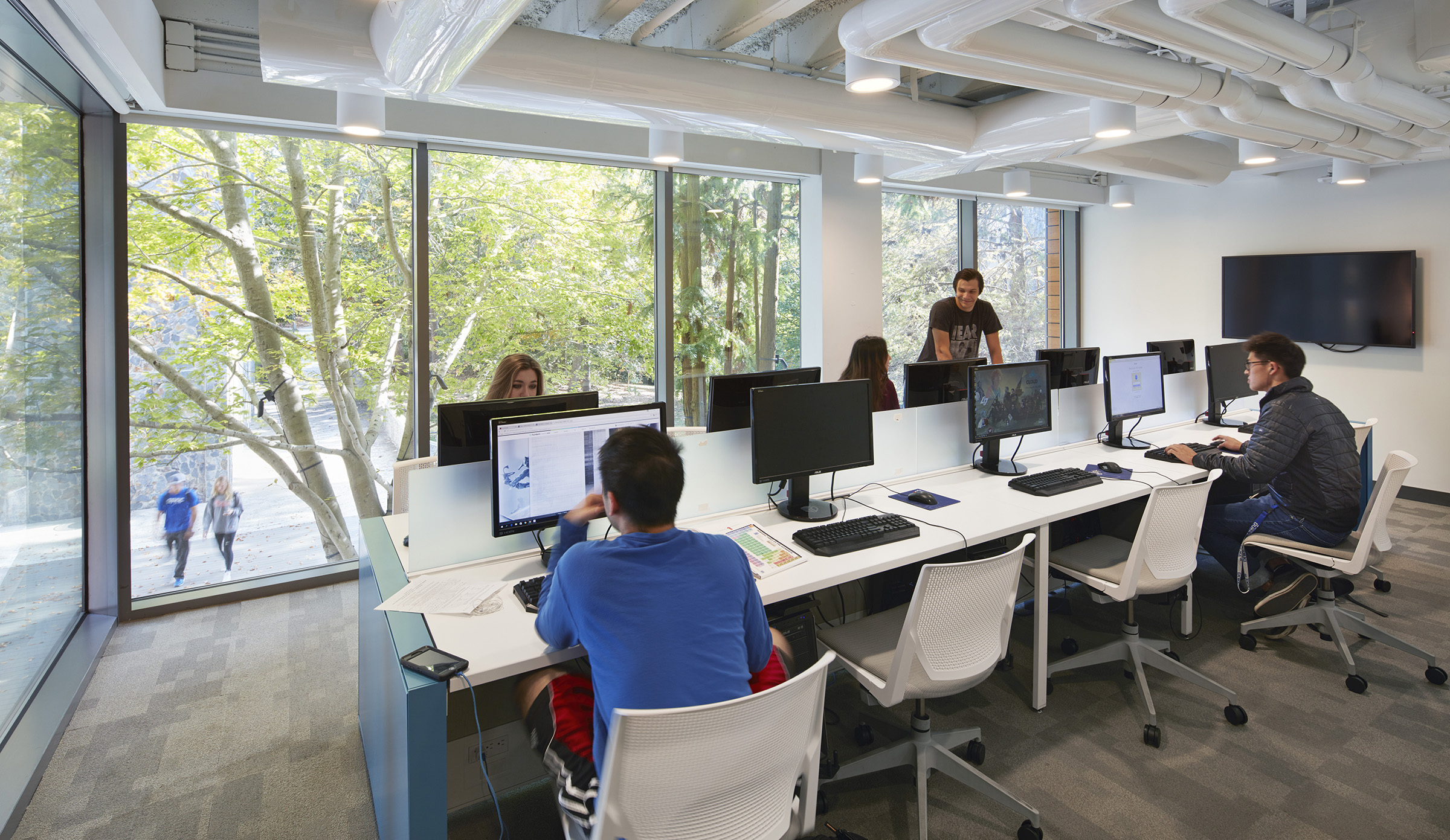Bob Gunn and Peter Aranyi on Student Housing Design for Generation Z
 Bob Gunn and Peter Aranyi, principals in our Charlotte, NC office, discuss the dramatic changes occurring in student housing design for Generation Z in the new issue of School Construction News. With environmental concerns, a nonstop relationship with technology, and a dislike for sharing a bedroom, the article focuses on how the expectations today’s students bring to on-campus housing are being met.
Bob Gunn and Peter Aranyi, principals in our Charlotte, NC office, discuss the dramatic changes occurring in student housing design for Generation Z in the new issue of School Construction News. With environmental concerns, a nonstop relationship with technology, and a dislike for sharing a bedroom, the article focuses on how the expectations today’s students bring to on-campus housing are being met.
“Residence halls are becoming more exciting architecturally on both the outside and inside,” observes Bob Gunn, “with vibrant and flexible furniture, rich materials, extensive daylighting, large two-story gathering spaces, and a blurring of the lines between inside and outside.”
The full article Whatever You Do, Don’t Call Them Dorms can be read online.
24/7 Tech Connectivity
“Electronic devices are a huge part of the student lifestyle. From smartphones to iPods and iPads to Kindles and laptops, students (and faculty) have an expectation that Wi-Fi connectivity will be available across campus for everything from study to socialization,” Gunn says, stressing that with all those devices comes the need for available electronic outlets on all corners of campus. He adds, “For colleges and universities, providing high-speed service is critical to a positive student and faculty experience and to their ability to work efficiently.”
Flexible Common Spaces
According to Gunn, “Precious spaces within a residence hall, common areas must be flexible and desirable – students must want to visit them.” He points out the need for lounges, study spaces, kitchens, and laundries to be equipped with comfortable furniture that can be easily reconfigured or moved to accommodate both impromptu and planned socialization.
 The article references Duke University’s Edens Quad, new “hangout” spaces that Clark Nexsen designed with power, Wi-Fi, and other amenities to support living and learning.
The article references Duke University’s Edens Quad, new “hangout” spaces that Clark Nexsen designed with power, Wi-Fi, and other amenities to support living and learning.
“Green screens, pool and ping pong tables, maker spaces, innovation incubators, and faculty-in-residence all indicate that today’s college housing differs drastically from the mid-twentieth century residences that many schools must now replace or renovate,” states Gunn.
Sustainable Learning Centers
How does residential design respond to Gen Z’s awareness of environmental concerns and desire to participate in solutions to ecological issues? According to Clark Nexsen’s Student Life practice leader, Peter Aranyi, “Residence halls have a unique opportunity to serve as sustainability learning centers – buildings that actively teach in addition to providing housing.”
“From green roofs to outdoor classrooms to ecologically-friendly design choices such as LED lighting, low-flow shower heads and toilets, and high efficiency washing machines,” he continues, “the spaces in which students live impact their awareness and understanding of sustainability.”
Increased Privacy
“Privacy is becoming a highly sought-after amenity, with most freshmen coming to campus never having shared a bedroom,” says Gunn. “Students want to choose how and when they socialize, and while the shared room is unlikely to completely disappear, colleges and universities are increasingly including a range of privacy levels from the number of students to a room to the number of students sharing a bathroom.”
He points out in the article that communal bathrooms are now rare in new residence halls. More typical, he said, is a “suite” style layout, which has two students sharing a bathroom.
Top photo of Orchard Hall, the first residence hall on the Brandywine campus of Penn State by Jeffrey Totaro. Middle photo of Duke University’s Edens Quad by Mark Herboth.